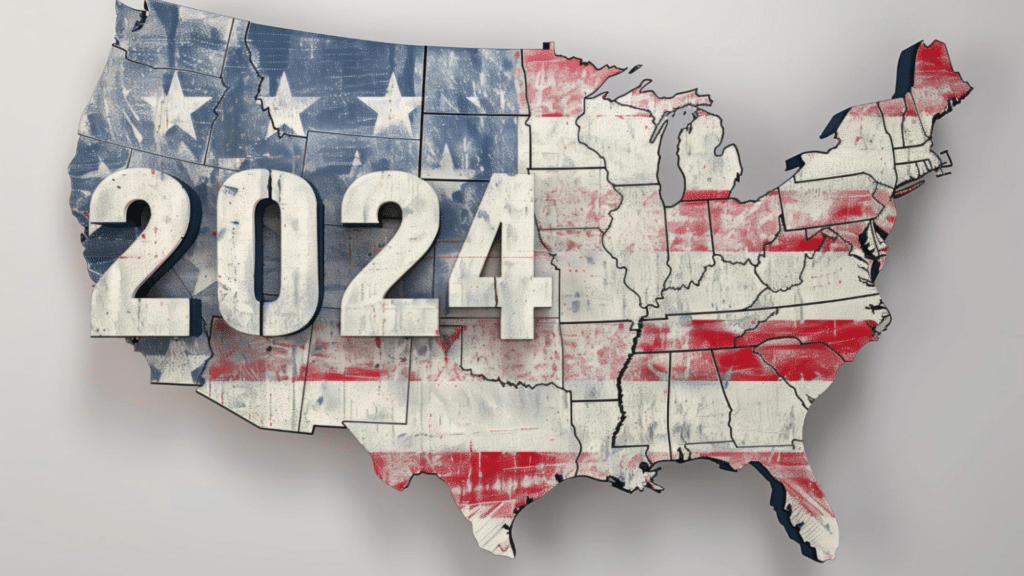The 2024 US primary elections and subsequent November general elections are swiftly approaching; thinking through how the outcome might impact education companies is something well worth doing. As an industry, K-12 Education is acutely affected by governmental decisions regarding funding, methodologies, policies, and the like – both at a federal level and at the state level. Consequently, the companies serving this industry need to be agile enough to navigate any potential changes and position their businesses in a way that can thrive regardless of the eventual outcome.
In this article, we’re going to explore three layers of these implications to help Education companies navigate the landscape over the next 12-18 months. You’ll also find that thinking about these topics can also be a valuable strategic exercise to determine where your company sits in the EdTech and Education ecosystem and where the possible threats and opportunities are.
Education Funding and Buying Decisions
Typically, the federal government will allocate a certain portion of the national budget to Education. These funds will then be transferred to state and local governments whose mandate is to serve the students and educational institutions in their respective states. The spending can include operations, salaries, maintenance, construction of public schools, student programs, curriculum, learning management infrastructure, technical-vocational training, school lunches, and many more line items.
Typically, the federal funding landscape is dominated by a key bill or set of bills that reflect the priorities of the political party involved. For example, the current funding paradigm is known as the Elementary and Secondary School Emergency Relief Fund (ESSER), which was a direct response to the COVID-19 pandemic. This funding is coming to an end over the next six months, so it remains to be seen what scale of education funding will be provided by the newly elected government when they determine their first budget. But what is clear is that the level of importance placed on Education compared to all the other societal spending will have a big impact on how much money makes its way into Education across the country.
Once the federal government has announced the budget, the states have almost complete freedom to spend their allocated funds in a way that works for their unique circumstances – meaning that the buying decisions are made almost entirely at the local level. In many cases, this means decisions are being made at the local school district level, abstracted one level further away from the state. This means that there is an incentive for these districts to spend all the money that they have been allocated so that they can show the need for future funding (some call it a “use it or lose it” strategy).
As such, we can think of the funding landscape as a pyramid. The federal government determines what percentage of GDP should be spent on education on a macro level. The states then must determine how to divide their allocation amongst the local districts, counties, and municipalities. Then, finally, the actual buying decisions are heavily influenced by players at the grassroots level – varying depending on acute needs and educational methodologies in that space.
This drip-down effect is what makes understanding the impact of an election complex. There is naturally going to be a lot of variation in how different funding environments shape up in terms of how much is spent per student, what purchases are made, and how those funds flex up and down over time. For Education companies trying to make sense of this, the key takeaway is that your strategy should be “local-smart.” Spend the time getting to understand the unique communities and school districts that you serve so that you can better calibrate your offering with the real needs on the ground.

Decisions on Methodologies, Curricula, and Assessments
The next aspect to consider is how the government can impact teaching curriculums, methodologies, and assessments. This is important for Education companies to understand because it shifts the customer needs in terms of technology, operational support, training, and a variety of other niches within the Education industry.
Similarly to the funding landscape, the decisions around teaching methodologies and curricula also lie at the state level. They establish and select the curricula for public schools, regulate teaching methods and instruction materials, and oversee all the policies enacted to try and enhance the school system more generally. As a result, all states have different standards, policies, and focus areas.
The federal government has limited direct influence in these areas, but of course, they will have some indirect influence in terms of incentive design, political lobbying, thought leadership, and various other soft powers. It’s difficult to determine how much impact that has, but as states compete for both results and overall funding, it would be naïve to think that the federal election doesn’t impact decisions about testing, curricula, and other teaching methodologies. The truth is that the overall strategies and direction of teaching will likely coalesce along with some key principles set in place by the government in charge, but with some variation based on the unique situations in each state.
There is a non-trivial chance that the election outcome can trigger decisions that take curricula and assessments in a new direction, especially as the country navigates a fast-changing landscape that is being disrupted by publicly available large language models. There is a lot of attention paid to the advancements in artificial intelligence, and this will likely play a role in how the new administration thinks about education. Education companies need to be prepared for this and remain adaptable so that they can reposition themselves accordingly.
Additionally, it will become even more important to drive the conversations through thought leadership around how the education ecosystem needs to evolve. There is space for new ideas and new directions, and Education providers should have a voice in these debates. As such, it shouldn’t be a passive exercise where companies sit back and wait to hear from the new government, but rather, they should be communicating their own views, thoughts, and vision for the future of education in the country. Being proactive in this way can make a big difference, especially in moments of political uncertainty.

The Impact of Political Uncertainty
Another key thing to consider for Education companies is how political uncertainty can impact the industry. The country is currently politically dynamic as we move closer to the election, and this means that some school districts may hold onto their funds at certain milestone moments in case significant changes are brought about by newly elected officials. This is a natural response because we aren’t sure what the Education landscape will look like under the new administration, so ‘saving for a rainy day’ could make sense.
Education companies need to understand this scenario because it changes how conversations and decisions for the longer sales cycles, products, and services will unfold – and it can have a material impact on customer willingness and decision timing on spending for new services, technology, projects, and materials. This is compounded by the fact that the ESSER funding is ending because states are less sure what their budgets will look like after Autumn 2024. Local school districts could hold their cards and checkbooks close to their chests over the coming months until there is more certainty about what the next few years are going to look like. Successful Education companies should be willing to bide their time and continue building relationships so that when there is certainty about budgets and overall direction, they are in a position to capitalize on that momentum and help solve known district-level pain.

Where to From Here?
Regardless of the outcome of the election, education product and service providers should be aware of the possible implications for their business and the industry as a whole. We’ve discussed the funding landscape, potential changes to strategic decisions in education, and the slowing effect of political uncertainty – all of which serve to change how Education companies should be operating over the next few months.
The key takeaway here is that Education vendors must adopt a hyper-local, district-centric strategy. By focusing on building strong relationships with their local communities, understanding the key pain points, and offering tailored solutions that align with these specific needs – they can put themselves in the best position to navigate whatever comes.
It’s also worth reiterating that education companies can play a significant role in driving key conversations during times of uncertainty. Leveraging experience and deep domain expertise, these companies can help guide policymakers and new government officials in making some very difficult decisions about the future of Education in the US. There are opportunities for profound improvements in outcomes if the country heads in the right direction, and EdTech and Education companies can be a part of that shift. However, this is only achieved through carefully curated conversations, nuanced messaging, and a willingness to engage with the political system in all its myriad ways.

Finding Key Leaders and Building Out Your Team in Times of Change
The Renaissance Network has helped Education & Technology companies find top executives and assemble goal-driven teams since 1996. Our mandate is to provide our global
partners with targeted, specialized search and consulting services to uncover
permanent and interim world-class talent to impact Education & Communities.
If you’re looking for high-performing talent who can help you navigate this potential political transition and come out thriving on the other side – then be sure to get in touch. We’d love to see how we can help.



